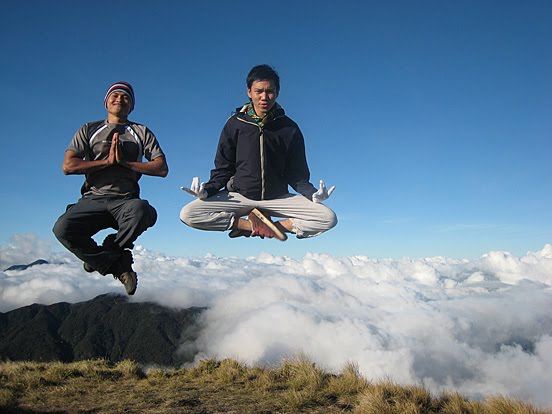I am going to describe a meditation session. Basically you have to keep in mind that meditation in Tibetan means becoming familiar. To become familiar with positive or virtuous habits of mind and it consists in taking our mind to a certain atmosphere in which it can contemplate things in a different way.
Two types of meditation.

1) Meditation to generate concentration: in Sanskrit for denominates shamata o Shin, in Tibetan. We familiarize our mind with a particular object of concentration, for example the breath. This type of meditation is intended to bring our mind to a neutral state, to a calmer state.
This type of meditation calms the mind.
2) Analytical meditation: it serves to do an introspection. It is known as Vipassana in Sanskrit or lakton in Tibetan. It is intended to bring intellectual understanding to experience.
This type of meditation achieves a change in our perception of things and people. In short, a change in the perception of reality.
Both techniques consist of leading our mind to become familiar or related to certain particular mental habits.
A meditation session, either shamata o Vipassana, consists of 4 fundamental points.
4 fundamental points to meditate.
1) ADOPT A PROPER POSTURE
We must take into account certain points in our body:
a) The knees and legs: the knees touch the ground. We can sit on a cushion to facilitate posture. In this way, a square is made between the two knees and the buttocks so that you are not moving or wobbling.
b) The hands: the traditional posture is the left hand down and the right hand up and the thumbs touch lightly and rest in the lap (below the navel).
c) The arms: we leave a space between the arms and the trunk; neither too close nor too far apart.
d) The back: it is the most important point. The back should remain straight but it does not have to be stiff.
When we straighten our backs we tend to tense our necks. To avoid this we can slightly tilt the chin.
Imagine we had a few coins stacked on our spine. If we move they fall.
e) The tongue: the tip of the tongue is glued to the upper palate.
f) The eyes: they are kept a little ajar. We don't focus them on anything in particular. We just keep them ajar.
g) The jaw and head: we keep them relaxed.
2) GENERATE A POSITIVE MOTIVATION.
We have to make it clear to our minds what we are doing and what we are doing it for.
What are we doing? Meditation.
What are we doing it for? To transform my mind and achieve more benefits for myself and others.
Each one has personal and different motivations. However, the important thing is that we generate a positive intention.
3) WE START MEDITATION.
Once we have adopted the proper posture and have taken a few moments to generate proper motivation, we enter into meditation proper.
It consists of focusing on the object of concentration in the case of shamata. If we have decided to concentrate on the breath, we will progressively familiarize our mind with the breath until we achieve the proper concentration.
If we do analytical meditation we can become familiar with some conclusion that we have reached and we take it to the experience to make it part of our life.
4) DEDICATE THE MERIT.
Dedicating the merit means thinking about all the positive energy that we have accumulated and channeling it so that it can be of help to others.

